Expansion of Harvard's Cambridge campus continued this summer as the University built what will be its largest underground space: a subterranean parking garage of about 730 spaces in the North Precinct, an area between Oxford Street and the Divinity School (below). Because future development will take place on top of the garage, this construction is the critical first step in the future use of the area by the Faculty of Arts and Sciences, which envisions a suite of science initiatives.
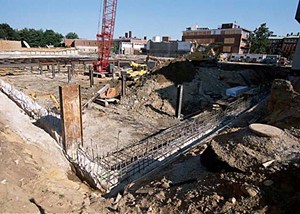 |
| Photograph by Jim Harrison |
Harvard is working hard to mitigate construction impacts on the adjacent Hammond Street neighborhood and to introduce new amenities, taking measures ranging from the planting of pines beside a towering temporary fence (below),
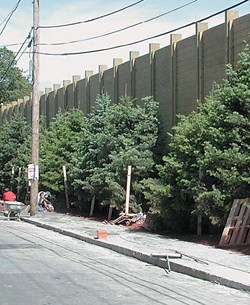 |
| Photograph by Jonathan Shaw |
to putting in brick sidewalks (below),
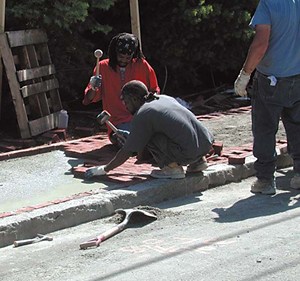 |
| Photograph by Jim Harrison |
to planting the second-story roof of 60 Oxford Street with deciduous greenery (below).
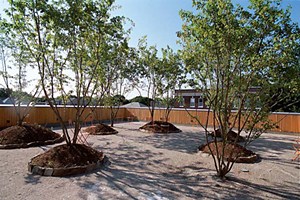 |
| Photograph by Jim Harrison |
A quarter-mile to the south, a pair of holes on opposite sides of Cambridge Street mark the future site of the two buildings that will comprise the future Center for Government and International Studies (below).
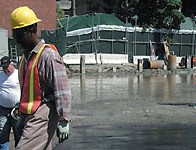 | 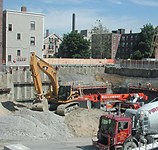 |
| Photograph by Jim Harrison | |
The temporary open space where Coolidge Hall once stood exposes a new view of the Graduate School of Design's Gund Hall studios (below).
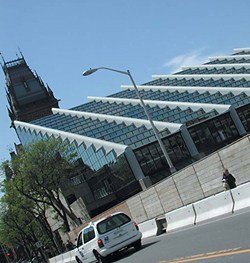 |
| Photograph by Jim Harrison |
Infastructure work behind the Science Center has begun in preparation for a 135,000-square-foot Laboratory for the Interface Science and Engineering, two-thirds of which will be underground (below).
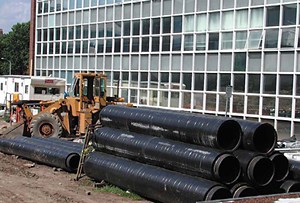 |
| Photograph by Vera Leung |
The proposed building, which will facillitate collaboration among scientists in Harvard's physics, engineering, chemistry, and biology departments in the study of mesoscale and nanoscale science, was designed by professor of architecture Rafael Moneo and will house facilities for vibration-sensitive work (photorealistic renderings below).
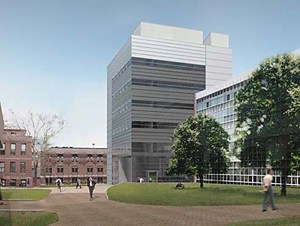 |
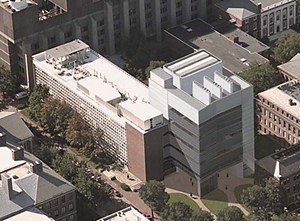 |
| Photorealistic renderings |
| Courtesy of FAS Physical Planning |





